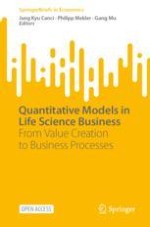This open access book explores the field of life science business from a multidisciplinary perspective. Applying statistical, mathematical, game-theoretic, and data science tools to pharmaceutical and biotechnology business endeavors, the book describes value creation, value maintenance, and value realization in the life sciences as a sequence of processes using the quantitative language of applied mathematics. Written by experts from a variety of fields, the contributions illustrate the shift from a deterministic to a stochastic view of the processes involved, offering a new perspective on life sciences economics.
The book covers topics such as valuing and managing intellectual property in life science, licensing in the pharmaceutical business, outsourcing pharmaceutical R&D, and stochastic modelling of a pharmaceutical supply chain. The book will appeal to scholars of economics and the life sciences, as well as to professionals in chemical and pharmaceutical industries.
